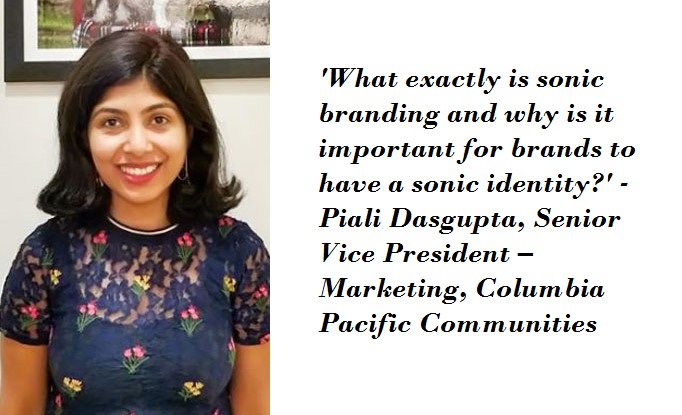What is sonic branding?
In its truest sense, sonic branding is an audio expression of a brand. Just as brands look, feel, talk and appear in a certain manner, they also sound a certain way. The musical identity of a brand is its sonic logo. A visual logo helps in building brand awareness and brand saliency through visual sense. Similarly, sonic branding/ audio logo helps doing the same, but through hearing. It’s essentially a tune/sound/rhythm that people associate with a specific brand over a period.

The musical logo is a core element to supplement the visual logo of a brand. Sound is considered one of the most important of the five senses. For many, it is a more important sense than sight because sound communicates to the brain much faster than sight. Therefore, having a sonic identity becomes imperative for brands that are looking to forge a memorable, long -term relationship with their customers.
Why invest in it?
Given that we live in a digital era where most consumer brands create an inordinate amount of digital content, the sonic identity of a brand plays as important a role as the visual identity of a brand.
Audio identity always creates a very high recall for any brand and makes it memorable. Think of Netflix’s famous Ta Dum, or Britannia’s ting tingti ting, or Mac Donald’s Ba Da Ba BaBa which made it the most recognisable sonic brand in the world.
Repeated use of the sonic logo across digital and offline touchpoints of a brand including on-ground events, apps, mobile ringtones, Interactive Voice Response (IVR) system and video content of the brand can create higher brand awareness and strong top of mind recall amongst consumers.
How does one go about creating a sonic identity?
It’s all about providing a sensory stimulus to the audience that helps them conjure up an image of the brand – whether that image is of a film about to start (Netflix) or someone prancing with joy at the sight of their favourite Mac Donald’s burger.
What’s therefore central to the whole idea of creating a sonic identity for a brand is the fact that it needs to be a reflection and an extension of the brand’s personality, emotions, attributes, and philosophy. For instance, Columbia Pacific Communities(CPC), together with BrandMusiq, one of the leading sonic branding companies in India, zeroed in on a zone of sound which was inspired by the brand’s approach to community living and the brand credo of positive ageing.
Earlier this year, Columbia Pacific Communities became one of the few consumer brands and the only senior living brand in the country to release its sonic identity. CPC’s sonic identity utilises the science of sound to evoke the brand’s desired persona and emotions, that revolves around its belief in care, empathy and compassion. The melody has RaagTilakKamod reflecting the caring and empathetic nature of the brand and RaagDesh reflecting Indian values of looking after the elderly. The emphasis on Indian raagas was deliberate. While Columbia Pacific Communities is a part of a global conglomerate, we were keen to create a sonic identity that was deeply rooted in India and reflected emotions and the spirit of this land.
Why is everyone talking about sonic branding?
A brand is about ideas and emotions. These ideas and emotions can manifest themselves in a visual, a film or an audio piece. Today, brands are finding more and more ways to expand their identity – by engaging with their audience through different modes. Audio is going to be one of the most important modes of communication in the coming years, as is already evident through the rise of podcasts, voice search and of course, sonic branding.
Also, let’s not forget that a sonic identity is one of the only ways (other than braille) for brands to build a connect with the vast number of visually impaired people (9.3 million, as per records) in the country.
Creating a sonic identity is not an overnight process. It involves a team of brand architects and custodians, musicians and researchers who work together to arrive at a zone of sound that is closest to the key emotions and the personality of the brand. The entire process, replete with iterations, lasts at least a few months.
In case of Netflix, it took a year to finalise their sonic identity, which became a roaring success. The OTT platform’s sonic identity is considered one of the most successful ones in current times and got brand custodians to talk about the importance of sound. The concept started gaining momentum from there.
And finally, what constitutes a great sonic identity?
To me, a great sonic identity is one that is authentic to the brand, evokes the right emotions, and builds a deep connect with the brand’s audience. It is usually short (not more than a few seconds), given the depleting attention spans, and is also hummable. It’s not intimidating, and yet, unique. It triggers one or more of the following emotions – happiness, calmness, joy, passion, anticipation, bliss, curiosity, intrigue and excitement.
Sonic branding isn’t for all brands. At the same time, it’s a very powerful brand building tool if used well and for the right reasons.







